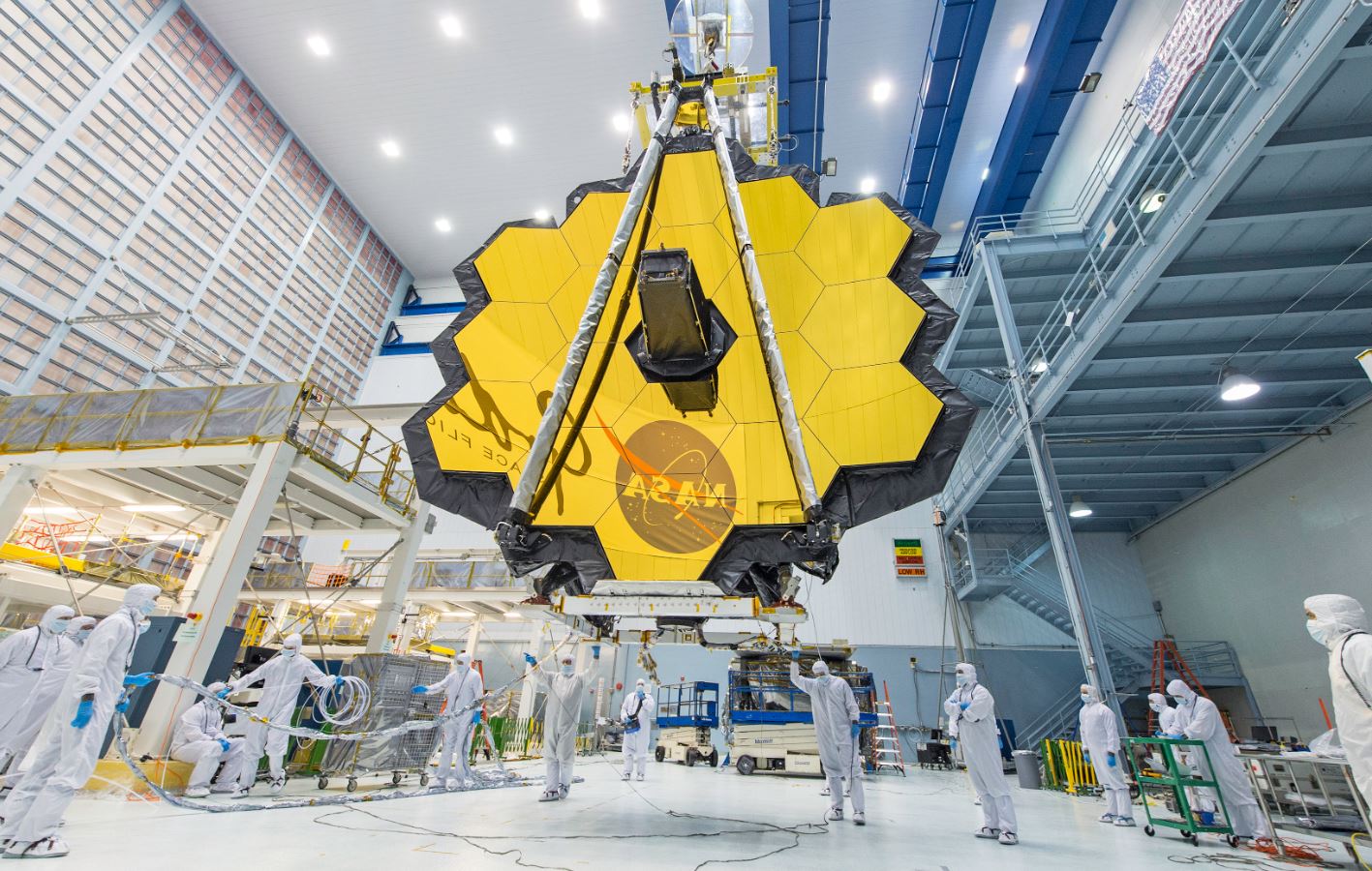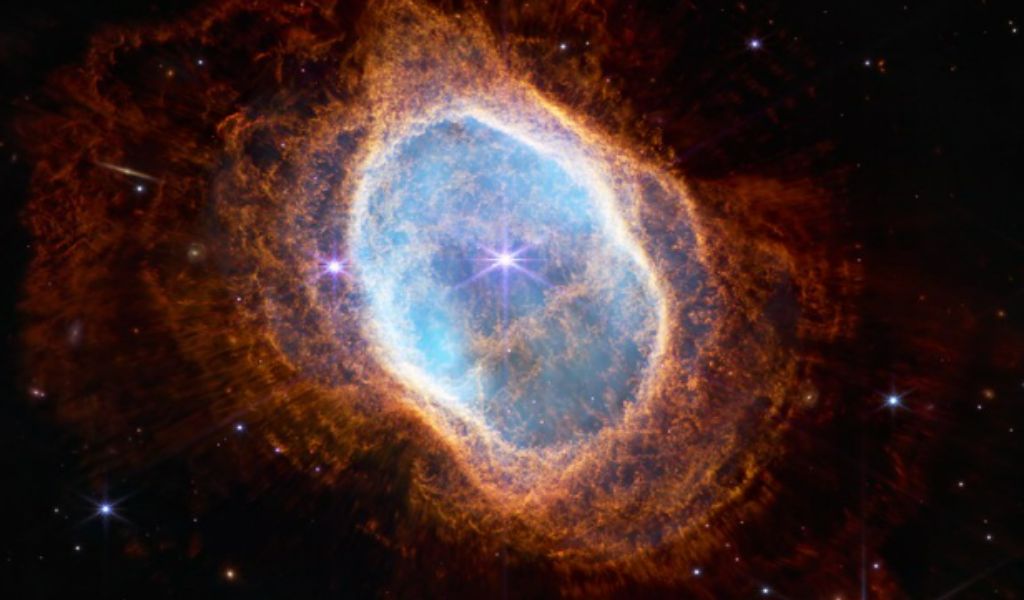Listen to the Podcast:
The James Webb Space Telescope caught a rare and short-lived phase of Wolf-Rayet, a star about to die (WR 124).
WR 124 is a massive star that is getting close to the end of its life. It is a rare sight and one of the brightest, most prominent, and easiest-to-find leads. WR-124 is in the constellation Sagittarius, about 15,000 light-years from Earth. About 5.8 trillion miles are equal to one light year.
These are some of the first things the James Webb Space Telescope will look at after it is launched in late 2021. The Mid-Infrared Instrument (MIRI), built into the telescope, looks at all the gas and dust that a big, hot star sends into space.
This waste, which shines purple like cherry blossoms, is used to make up the outer layers of stars. Scientists say that only a few stars undergo this change. Usually, the last step before they explode and become a supernova.
Scientists can learn important things from what the James Webb Telescope sees. Most of the time, these stars are in the process of shedding their outer layers, which makes a halo of gas and dust around them.

About 30 times as heavy as the Sun, WR 124 has lost about 10 times as much mass as the Sun so far. Cosmic dust is made when this star’s thrown-off gas moves away from it. As the dust cools, it gives off infrared light, which the Webb Telescope can pick up very well.
The dust that makes up the universe can survive supernova explosions and add to the total dust in the galaxy.
Dust is an important part of how the universe works. It makes up stars, planets, and even the building blocks of life on Earth by giving molecules a place to stand.
The Webb telescope gives us new ways to look at details in space dust, which can be seen best in infrared light.
The Near-Infrared Camera (NIRCam) on the Webb Telescope finds a good balance between how bright the star core of WR 124 is and how detailed the faint gas around it is. In the meantime, MIRI showed how a cloud of gas and dust surrounded the star was made.
A similar transition star was photographed a long time ago by the Hubble Space Telescope. It looked like a ball of fire with no fine details.
Before the Webb Telescope was put into space, scientists didn’t know enough about how dust is made in places like WR 124 to ask questions about it.
From the ESA website on March 17: “Stars like WR 124 also serve as analogs to help scientists understand important times in the early history of the universe.”
For your information, heavy elements made in the core of the young universe, including on Earth, came from dying stars like the ones you see in the picture. At the South by Southwest conference in Austin, Texas, NASA showed this picture from the Webb Telescope.








































